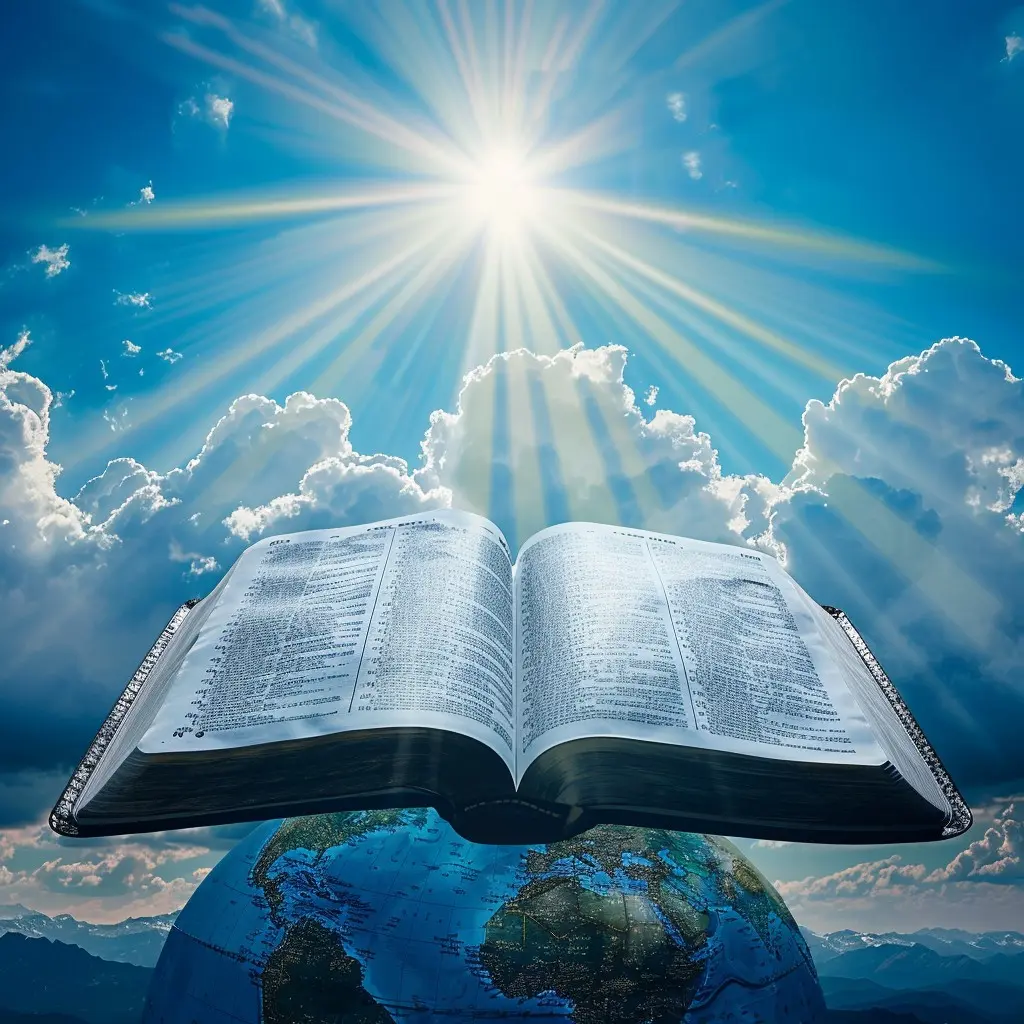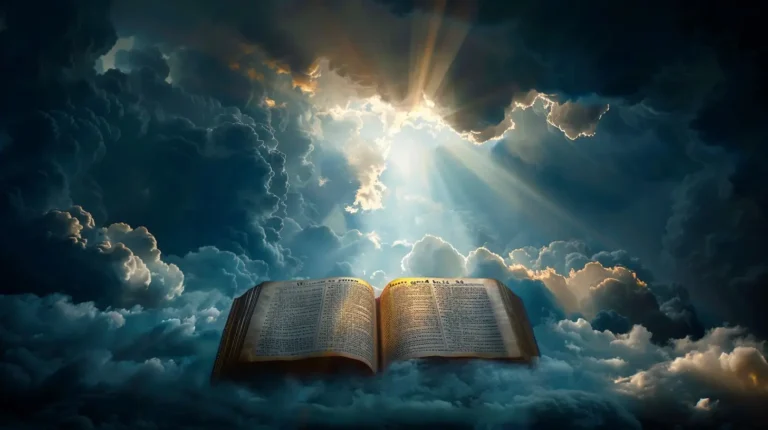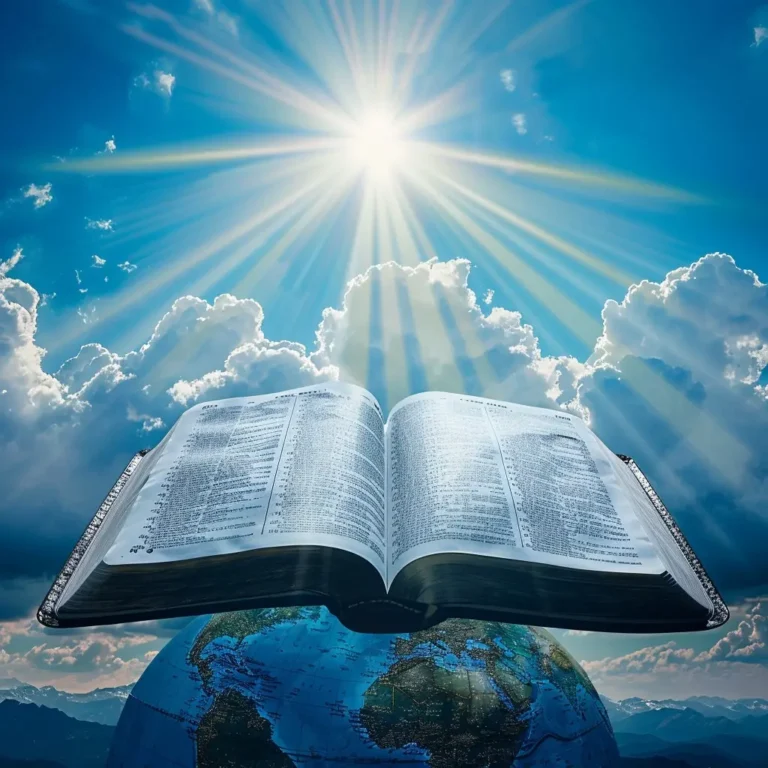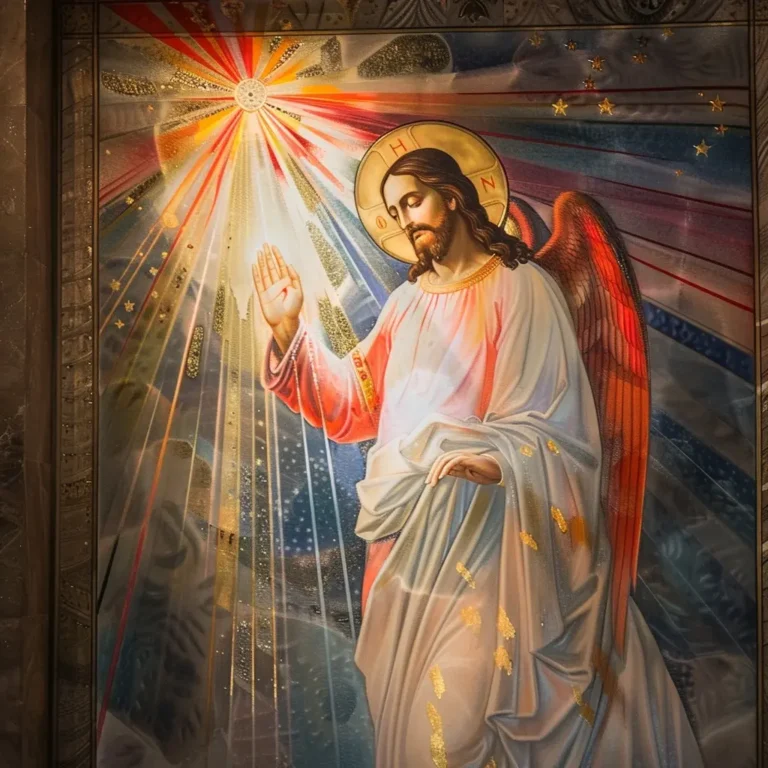Intensely challenging Bible quiz questions that will test even the most seasoned scholars of the Scriptures.
Each question is designed to stretch your knowledge of obscure and detailed aspects of the Bible, followed by comprehensive answers to deepen your understanding.
Also have Fun with our Fun Facts Generator and be amazed about the wonderful creation of God.
Visit Fun Facts About our World too or checkout other bible trivia quizzes like this one.
Bible Quiz With Answers for Teens -youth, Adults
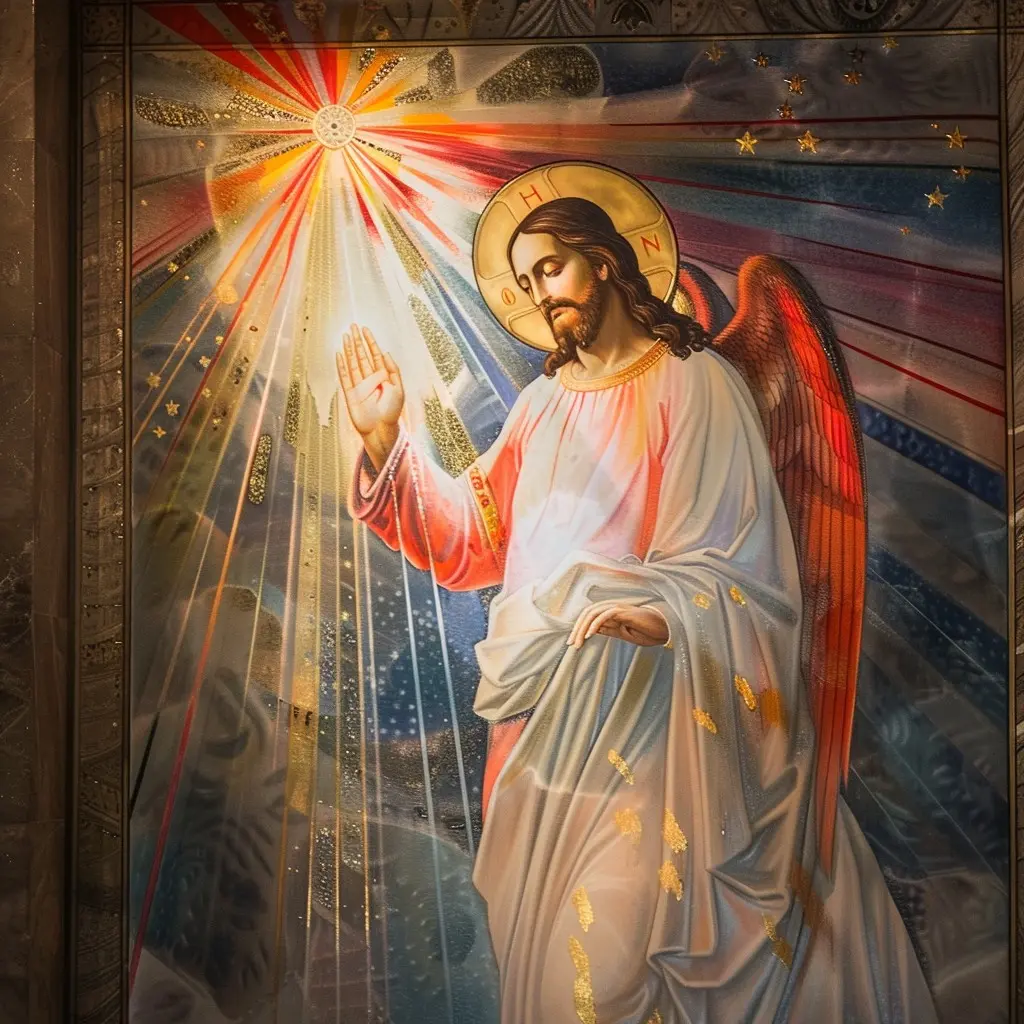
1. What is the significance of the name “Mephibosheth” in the Bible?
Answer
Mephibosheth
Mephibosheth was the son of Jonathan and the grandson of King Saul. His name means “excretion of shame,” and he is notable for being crippled in both feet due to an accident at age five. Despite his condition, King David honored his promise to Jonathan by restoring Mephibosheth’s inheritance and allowing him to eat at the king’s table (2 Samuel 4:4, 2 Samuel 9).
2. Which prophet married a woman of ill repute as a symbol of Israel’s unfaithfulness?
Answer
Hosea
The prophet Hosea was commanded by God to marry Gomer, a woman known for her unfaithfulness, as a metaphor for Israel’s infidelity to God. This symbolic act was meant to illustrate the deep and painful consequences of the Israelites’ disobedience and idolatry (Hosea 1:2-3).
3. In which book of the Bible is the term “ephah” used as a unit of measure for grain, and what is its significance?
Answer
Zechariah
The term “ephah” appears in the book of Zechariah (Zechariah 5:6-8) as a measure for grain. In the context of the vision described, the ephah represents a measure of wickedness being carried away by a woman in a basket, symbolizing the removal of sin and injustice from the land.
4. Who was the king of the Amorites defeated by Moses and what was the name of his kingdom?
Answer
Sihon
King Sihon of the Amorites was defeated by the Israelites as they journeyed through the wilderness. His kingdom, known as the kingdom of Heshbon, was located east of the Jordan River. The defeat of Sihon was significant as it marked the first major military victory for the Israelites in their conquest of the Promised Land (Numbers 21:21-26, Deuteronomy 2:24-37).
5. What is the origin and meaning of the name “Goliath” in the Bible?
Answer
Goliath
Goliath, the Philistine giant defeated by David, is described in 1 Samuel 17. His name, of uncertain origin, is associated with the Philistine word for “exile” or “sojourner.” Goliath was a champion warrior, and his defeat symbolized the triumph of faith and divine intervention over seemingly insurmountable odds.
6. What unusual object did God use to speak to Balaam and what was its message?
Answer
A Donkey
In Numbers 22:21-31, God used a donkey to speak to Balaam after the prophet’s path was obstructed by an angel of the Lord. The donkey’s ability to speak and see the angel was a miraculous event intended to correct Balaam’s misguided intentions and reveal the divine message that Balaam was to deliver.
7. What specific dietary laws did the Israelites receive in Leviticus 11 that differ from the Noahic covenant?
Answer
Leviticus 11 Dietary Laws
Leviticus 11 outlines specific dietary laws that were distinct from the Noahic covenant established in Genesis 9:4, which permitted the consumption of all animals that were not lifeblood. The Mosaic laws specified clean and unclean animals, including prohibitions on eating certain birds, fish without fins and scales, and insects. This distinction was part of the broader holiness code intended to set the Israelites apart from other nations.
8. Which king is mentioned in the Bible as having an encounter with the prophet Elisha and then later dying by falling through a lattice?
Answer
King Ahaziah
King Ahaziah of Israel suffered an injury from falling through a lattice in his upper chamber, as detailed in 2 Kings 1. This incident occurred after seeking counsel from Baal-Zebub, the god of Ekron, rather than from the Lord, demonstrating his lack of faith and leading to his eventual death.
9. What was the only non-Levite tribe that was assigned to assist the Levites in caring for the tabernacle?
Answer
The Tribe of Judah
Although the Levites were primarily responsible for the tabernacle, the tribe of Judah was specifically mentioned as having a role in assisting with the transportation and care of the tabernacle (Numbers 1:49-54). This arrangement reflects the collaborative effort in maintaining the sacred space.
10. Which Old Testament prophet is known for his vision of a “rolling book” and what did it signify?
Answer
Ezekiel
The prophet Ezekiel had a vision of a “rolling book” in Ezekiel 2:9-10. The book was filled with lamentations, mourning, and woe, and it was given to Ezekiel to eat. This vision symbolized the prophet’s role in proclaiming God’s message of judgment and sorrow against Israel.
11. Who was the Jewish high priest during the reign of King Herod and what was his role in the New Testament narrative?
Answer
Annas
Annas was the Jewish high priest during the early part of Jesus’ ministry and was a key figure in the events leading to Jesus’ crucifixion. Although his official position had been replaced by Caiaphas, he still held significant influence and was involved in the interrogation of Jesus before His trial (John 18:13-24).
12. In which biblical book is the “Song of Deborah” found, and what was its historical significance?
Answer
Judges
The “Song of Deborah” is found in Judges 5. It is a victory hymn sung by Deborah and Barak after their triumph over Sisera and the Canaanite forces. The song is significant as it commemorates the military victory and praises the role of women in the deliverance of Israel.
13. Who was the king of Judah that sought to kill the prophet Jeremiah and was ultimately executed by Nebuchadnezzar?
Answer
Zedekiah
King Zedekiah of Judah sought to kill the prophet Jeremiah due to Jeremiah’s prophecies of impending Babylonian conquest (Jeremiah 38). Zedekiah’s actions and his eventual fate—being captured by Nebuchadnezzar, witnessing the destruction of Jerusalem, and being executed—reflect the consequences of ignoring divine warnings.
14. What specific sin led to King Saul’s rejection by God?
Answer
Impatience and Disobedience
King Saul’s rejection by God was due to his disobedience and impatience. Notably, in 1 Samuel 13, Saul unlawfully offered a burnt sacrifice, a role designated only for Samuel, demonstrating his failure to adhere to God’s commands and his lack of trust in divine timing.
15. What was the name of the Jewish scribe who was appointed by King Artaxerxes to lead a group of exiles back to Jerusalem?
Answer
Ezra
Ezra was a Jewish scribe and priest appointed by King Artaxerxes of Persia to lead a group of Jewish exiles back to Jerusalem (Ezra 7:6-10). Ezra played a critical role in the religious and social restoration of the Jewish community, including the reestablishment of the law and covenant.
16. In which book of the Bible do the “Songs of Ascents” appear, and what is their significance?
Answer
Psalms
The “Songs of Ascents” are found in Psalms 120-134. These 15 psalms were sung by Israelites as they made their way to Jerusalem for religious festivals, reflecting themes of pilgrimage, worship, and trust in God during their journey.
17. Who was the chief of the Levites responsible for overseeing the work of the tabernacle?
Answer
Eleazar
Eleazar, the son of Aaron, was the chief of the Levites responsible for overseeing the tabernacle’s work (Numbers 3:32). He was involved in the management and transportation of the tabernacle’s sacred items and the leadership of the Levitical duties.
18. Which Old Testament prophet had a vision of a valley full of dry bones, and what was the message of this vision?
Answer
Ezekiel
Ezekiel had a vision of a valley filled with dry bones, which came to life and were restored to flesh (Ezekiel 37). This vision symbolized the restoration of Israel, promising that God would revive the nation and bring them back to their land after exile.
19. What was the name of the king who had a dream interpreted by Daniel involving a statue with different materials?
Answer
Nebuchadnezzar
King Nebuchadnezzar of Babylon had a dream of a large statue composed of various materials, which Daniel interpreted as representing successive empires that would rise and fall before the establishment of God’s eternal kingdom (Daniel 2). The dream revealed the divine plan for world history and the ultimate triumph of God’s kingdom.
20. Who was the only prophet mentioned in the Bible to perform a resurrection, and who was revived?
Answer
Elijah
The prophet Elijah is noted for performing a resurrection by
raising the widow’s son from the dead in Zarephath (1 Kings 17:17-24). This miracle demonstrated God’s power over life and death and affirmed Elijah’s prophetic authority.
21. What unique request did Solomon make of God when he became king?
Answer
Wisdom
When Solomon became king, he requested wisdom from God to govern his people effectively (1 Kings 3:5-14). His request pleased God, who granted him not only wisdom but also wealth and honor, making him renowned for his wise judgments and administrative skills.
22. Which minor prophet is known for his prophetic book being the shortest in the Old Testament?
Answer
Obadiah
The book of Obadiah is the shortest book in the Old Testament, consisting of just one chapter. It delivers a prophecy against Edom, focusing on the judgment of Edom for its violence against Jacob (Israel) and the restoration of God’s kingdom.
23. Who was the king of Moab who hired Balaam to curse Israel?
Answer
Balak
King Balak of Moab sought to hire Balaam to curse the Israelites as they approached his territory. The story, detailed in Numbers 22-24, reveals Balak’s fear of Israel’s power and Balaam’s encounters with God, who ultimately blessed Israel instead of cursing them.
24. What unusual feature characterized the offerings made by Abel compared to those of Cain?
Answer
Fat Portions
Abel offered the “fat portions” of his firstborn lambs, which were considered the best parts of the animal (Genesis 4:4). This contrasted with Cain’s offering of fruits and vegetables, which did not carry the same symbolic weight of sacrifice. Abel’s offering was accepted by God, highlighting the importance of offering one’s best to God.
25. Who was the prophet that anointed Jehu as king of Israel, and what was Jehu known for?
Answer
Elisha
The prophet Elisha anointed Jehu as king of Israel in 2 Kings 9. Jehu is known for his zealous reforms, including the destruction of the house of Ahab, the killing of Jezebel, and the eradication of Baal worship in Israel.
26. What was the name of the biblical city whose fall was preceded by the sound of trumpets and a shout?
Answer
Jericho
The city of Jericho’s fall is described in Joshua 6, where the Israelites, led by Joshua, marched around the city for seven days. On the seventh day, they circled the city seven times, and at Joshua’s command, they blew trumpets and shouted, causing the walls of Jericho to collapse and allowing them to capture the city.
27. What is the significance of the vision of the four beasts in the Book of Daniel?
Answer
Daniel 7 Vision
Daniel 7 describes a vision of four great beasts emerging from the sea, representing successive empires that would rise and fall before the establishment of God’s eternal kingdom. This vision provides insight into the prophecy regarding the rise and fall of earthly powers and the ultimate triumph of God’s kingdom.
28. Who was the only non-Levite to carry the Ark of the Covenant and what was the outcome of his actions?
Answer
Uzzah
Uzzah, not a Levite, was struck dead by God for touching the Ark of the Covenant when the oxen pulling the cart stumbled (2 Samuel 6:6-7). His death highlighted the sanctity of the Ark and the importance of adhering to divine commands regarding its transport.
29. Which woman in the Bible was a prophetess, judge, and wife of Lapidoth?
Answer
Deborah
Deborah was a prophetess, judge, and the wife of Lapidoth, as detailed in Judges 4 and 5. She was the only female judge of Israel and played a pivotal role in leading Israel to victory against the Canaanite general Sisera, highlighting her unique position as a leader and prophetess in a male-dominated society.
30. What unusual request did King Solomon make when he prayed to God in 1 Kings 3?
Answer
Wisdom
When Solomon became king, he asked God for wisdom to govern his people, rather than for wealth or long life (1 Kings 3:5-14). This request was granted by God, making Solomon renowned for his wisdom, and it led to a period of prosperity and peace in Israel.
31. In which book of the Bible is the term “ephah” used, and how does it relate to the vision of Zechariah?
Answer
Zechariah
In Zechariah 5:6-8, the term “ephah” is used as a measure for grain. In Zechariah’s vision, an ephah represents wickedness being carried away from the land. The vision uses the ephah as a symbol of the removal of sin and injustice.
32. Which prophet had a vision of a flying scroll and what did this vision signify?
Answer
Zechariah
Zechariah had a vision of a flying scroll in Zechariah 5:1-4. The scroll, measuring 20 by 10 cubits, was inscribed with curses against thieves and those who swear falsely. This vision symbolized the sweeping judgment of God against sin and corruption.
33. Who was the high priest who, along with his sons, was punished for their disobedience in the Book of Leviticus?
Answer
Aaron
Aaron and his sons were punished for their disobedience when they offered “unauthorized fire” before the Lord (Leviticus 10:1-2). This act of disobedience led to their immediate death as a severe reminder of the holiness and exacting nature of God’s instructions.
34. What unique form of divine judgment is described in the Book of Revelation involving a “scarlet beast”?
Answer
Revelation 17
In Revelation 17, the “scarlet beast” is part of a vision of the Great Prostitute, representing the corrupt political and religious systems opposed to God. The beast, covered with blasphemous names and with seven heads and ten horns, signifies the power and opposition to divine authority during the end times.
35. Which king of Israel is noted for his alliance with the king of Judah, and what was the result of this alliance?
Answer
Ahab
King Ahab of Israel formed an alliance with Jehoshaphat, king of Judah, by marrying his daughter, Athaliah, to Ahab (1 Kings 22). This alliance led to joint military campaigns, but it also brought increased idolatry and sin into Israel, resulting in prophetic rebukes and ultimately Ahab’s downfall.
36. Who was the only woman to judge Israel and what significant military victory did she oversee?
Answer
Deborah
Deborah was the only female judge of Israel and she played a crucial role in the victory over Sisera, the commander of the Canaanite army (Judges 4-5). Her leadership and prophetic insight led to a significant military victory, which was commemorated in the Song of Deborah.
37. In which biblical narrative does a prophet prophesy the death of a king while his bones are still unburied?
Answer
1 Kings 13
In 1 Kings 13, a prophet from Judah prophesies against the altar in Bethel and declares that King Jeroboam’s bones will be burned on it. This prophecy is fulfilled after Jeroboam’s death, signifying the divine judgment on the idolatry introduced by his reign.
38. What was the content of the letter that Paul wrote to Philemon, and why was it significant?
Answer
Letter to Philemon
Paul’s letter to Philemon was a personal appeal regarding Onesimus, a runaway slave who had converted to Christianity. Paul requested Philemon to receive Onesimus back not as a slave but as a brother in Christ (Philemon 1:10-16). The letter is significant for its principles of forgiveness and reconciliation.
39. Which biblical character is known for his experience of having his name changed from Abram to Abraham?
Answer
Abraham
Abram’s name was changed to Abraham by God as a sign of the covenant between them, marking a transition from being the father of many nations (Genesis 17:5). This new name signified his role in God’s plan for the establishment of a great nation through him.
40. What was the specific nature of the covenant between God and Noah, and what symbol did God use to signify it?
Answer
The Rainbow Covenant
The covenant between God and Noah was a promise that God would never again destroy the earth with a flood (Genesis 9:8-17). The rainbow was given as a sign of this everlasting covenant, symbolizing God’s faithfulness and mercy.
41. Who was the prophet known for his vision of a “plumb line” and what was the vision meant to convey?
Answer
Amos
The prophet Amos had a vision of a “plumb line” in Amos 7:7-8. The plumb line symbolized God’s standard of justice and righteousness, and the vision conveyed the message that Israel would be measured by this standard and found wanting, leading to divine judgment.
42. In which book of the Bible is the “Valley of Dry Bones” vision found, and what was the vision’s significance?
Answer
Ezekiel
The “Valley of Dry Bones” vision is found in Ezekiel 37. This vision depicted a
valley filled with dry bones that were resurrected and covered with flesh, symbolizing the revival and restoration of the nation of Israel after a period of exile and despair.
43. What was the name of the prophetess who, along with her husband, dedicated their daughter to serve in the temple?
Answer
Hannah
Hannah, the mother of the prophet Samuel, dedicated her son to serve in the temple after God answered her prayers for a child (1 Samuel 1:11, 1 Samuel 1:28). Although not a prophetess in the traditional sense, her faith and dedication were instrumental in Samuel’s role as a prophet.
44. What unique method did Gideon use to confirm God’s will regarding the defeat of the Midianites?
Answer
The Fleece Test
Gideon used the “fleece test” to confirm God’s will. He placed a fleece on the threshing floor and asked God to make the fleece wet while keeping the ground dry, and then to make the fleece dry while keeping the ground wet (Judges 6:36-40). This method demonstrated Gideon’s need for reassurance and God’s patience in providing confirmation.
45. Who was the Egyptian Pharaoh who had a dream interpreted by Joseph, and what did the dream signify?
Answer
Pharaoh of Egypt
Pharaoh had two dreams interpreted by Joseph, which were recorded in Genesis 41. The dreams of seven fat cows being devoured by seven lean cows and seven full ears of grain being consumed by seven thin ears predicted seven years of plenty followed by seven years of famine. Joseph’s interpretation led to his rise to prominence in Egypt as a wise administrator.
46. Which prophet was thrown into a pit and later rescued by an Ethiopian eunuch?
Answer
Jeremiah
Jeremiah was thrown into a pit by officials who opposed his prophecies of Jerusalem’s destruction (Jeremiah 38:6). He was later rescued by Ebed-Melech, an Ethiopian eunuch, who interceded on his behalf to King Zedekiah, demonstrating the prophet’s enduring message and the respect of some for his role.
47. What was the name of the city where Jonah was sent to prophesy, and what was the outcome of his mission?
Answer
Nineveh
Jonah was sent to the city of Nineveh to prophesy its destruction due to its wickedness (Jonah 1:2). The city’s inhabitants repented, leading God to spare them from destruction, showcasing the theme of mercy and repentance in Jonah’s story.
48. Who was the prophet who challenged the prophets of Baal on Mount Carmel and what was the outcome of this confrontation?
Answer
Elijah
Elijah challenged the prophets of Baal on Mount Carmel in 1 Kings 18. The confrontation involved a contest to call down fire from heaven to consume a sacrifice. God answered Elijah’s prayer with fire, proving His supremacy over Baal and leading to the execution of the false prophets.
49. What was the name of the woman who hid the spies sent by Joshua to Jericho, and what was her role in the conquest?
Answer
Rahab
Rahab, a prostitute in Jericho, hid the spies sent by Joshua and helped them escape (Joshua 2). Her actions were pivotal in the conquest of Jericho, and she and her family were spared due to her faithfulness. Rahab’s inclusion in the genealogy of Jesus (Matthew 1:5) highlights her significant role in biblical history.
50. What was the role of the “Apostle to the Gentiles” and who held this title?
Answer
Paul
Paul, originally known as Saul of Tarsus, was designated the “Apostle to the Gentiles” by Jesus Christ. His role involved spreading the Gospel to non-Jewish communities throughout the Roman Empire, founding churches, and writing several New Testament epistles that addressed theological and practical issues within the early Christian church (Acts 9:15, Romans 11:13).
51. What was the name of the Israelite king who famously cut the covenant with God by dividing animals?
Answer
Abraham
In Genesis 15, Abraham (then Abram) cut a covenant with God by dividing animals and arranging the pieces (Genesis 15:9-18). This ancient covenant ritual was symbolic of the agreement between God and Abraham, promising him descendants and land, and it demonstrated Abraham’s faith and God’s commitment to fulfilling His promises.
52. Who was the prophet that predicted the coming of a “messenger” who would prepare the way for the Lord?
Answer
Malachi
The prophet Malachi predicted the coming of a messenger who would prepare the way for the Lord, a prophecy that Christians understand as referring to John the Baptist (Malachi 3:1). This messenger was to announce the coming of the Lord and was part of the final prophetic message in the Old Testament.
53. What was the name of the prophet who was sent to the northern kingdom of Israel to warn against the dangers of their alliances with foreign nations?
Answer
Isaiah
The prophet Isaiah was sent to the northern kingdom of Israel (also referred to as Ephraim) to warn against forming alliances with foreign nations, particularly Assyria (Isaiah 7). His prophecies included warnings about the consequences of such alliances and the call to trust in God alone.
54. What significant event in the life of Jesus is described in the Gospel of Mark 9:2-10?
Answer
The Transfiguration
In Mark 9:2-10, the Transfiguration of Jesus is described, where Jesus is transformed and shines brightly on a mountain, and Moses and Elijah appear with Him. This event is significant as it reveals Jesus’ divine glory and affirms His role as the Son of God, witnessed by Peter, James, and John.
55. What is the biblical significance of the term “The Great Tribulation”?
Answer
The Great Tribulation
The term “The Great Tribulation” refers to a period of intense suffering and persecution described in Revelation 7:14 and Matthew 24:21. It is a time of unparalleled distress that will precede the Second Coming of Christ, characterized by widespread turmoil, persecution of the faithful, and divine judgment.
56. Which prophet is known for his vision of a “four-horse chariot” and what did this vision represent?
Answer
Zechariah
Zechariah had a vision of a “four-horse chariot” in Zechariah 6:1-8. The vision depicted four chariots with different colored horses representing the four spirits or angels sent by God to patrol the earth and carry out His divine judgments. This vision signified God’s control over the affairs of the world and His plans for judgment and restoration.
57. Who was the biblical figure that encountered the angel of the Lord in the form of a burning bush and what was the message delivered?
Answer
Moses
Moses encountered the angel of the Lord in the form of a burning bush on Mount Horeb (Exodus 3). The message delivered was a divine call to Moses to lead the Israelites out of Egyptian bondage, and it included the revelation of God’s name as “I AM WHO I AM” (YHWH).
58. What role did the “Cherubim” play in the construction of the Ark of the Covenant?
Answer
Cherubim
The Cherubim were angelic figures described in Exodus 25:18-22 as being placed on the cover of the Ark of the Covenant, known as the “mercy seat.” Their wings were spread out over the Ark, and it was above this mercy seat that God was said to dwell and communicate with Moses. The cherubim symbolized the divine presence and protection.
59. What was the name of the Persian king who issued a decree allowing the Jews to return to Jerusalem and rebuild the temple?
Answer
Cyrus
King Cyrus of Persia issued a decree allowing the Jews to return to Jerusalem and rebuild the temple (Ezra 1:1-4). This decree fulfilled the prophecy of Isaiah and marked the beginning of the Jewish return from Babylonian exile and the restoration of the temple.
60. Who was the New Testament figure known for his dramatic conversion experience on the road to Damascus?
Answer
Paul
Paul, originally known as Saul of Tarsus, experienced a dramatic conversion on the road to Damascus when he encountered the risen Christ (Acts 9:1-19). This event led to his transformation from a persecutor of Christians to a leading apostle and missionary of the early church.
61. What was the name of the king of Judah who sought guidance from the prophet Isaiah during the Assyrian invasion?
Answer
Hezekiah
King Hezekiah of Judah sought guidance from the prophet Isaiah during the Assyrian invasion of Jerusalem (Isaiah 36-37). Isaiah’s prophecy assured Hezekiah that God would protect Jerusalem and defeat the Assyrian army, which was ultimately fulfilled as the Assyrian forces were miraculously defeated.
62. In the Book of Revelation, what do the seven seals symbolize?
Answer
The Seven Seals
The seven seals in the Book of Revelation (Revelation 6-8) symbolize a series of divine judgments and events that will occur during the end times. Each seal represents a specific event or judgment, leading up to the final culmination of God’s plan for the world.
63. Who was the prophet who opposed the false prophets of Baal and declared a drought upon the land?
Answer
Elijah
Elijah was
the prophet who opposed the false prophets of Baal and declared a drought upon the land of Israel (1 Kings 17:1). His confrontation with Baal’s prophets on Mount Carmel demonstrated God’s power and led to the end of the drought, restoring the land after a period of severe drought and famine.
64. What is the significance of the “Golden Calf” incident in the Book of Exodus?
Answer
The Golden Calf
The incident of the Golden Calf, described in Exodus 32, involved the Israelites creating and worshipping a golden calf idol while Moses was on Mount Sinai receiving the Ten Commandments. This act of idolatry was a serious violation of the covenant with God and led to divine anger, the breaking of the tablets, and subsequent punishment for the people.
65. Who was the prophet that performed a miracle involving a dead child and was known for his ministry in the northern kingdom of Israel?
Answer
Elijah
Elijah performed the miracle of raising a dead child to life in the home of the widow at Zarephath (1 Kings 17:17-24). This miracle demonstrated God’s power and Elijah’s prophetic authority, reinforcing his role as a prophet in the northern kingdom of Israel.
66. What was the primary focus of the Book of Ecclesiastes and who is traditionally believed to be its author?
Answer
Ecclesiastes
The primary focus of the Book of Ecclesiastes is the contemplation of the meaning of life and the futility of human endeavors apart from God. The author, traditionally believed to be King Solomon, reflects on the vanity and fleeting nature of worldly pursuits and the ultimate significance of fearing God and keeping His commandments (Ecclesiastes 1:2, 12:13).
67. What was the purpose of the “Shema” in Jewish tradition, and where can it be found in the Bible?
Answer
The Shema
The Shema is a central declaration of the Jewish faith, affirming the oneness of God and the commandment to love Him with all one’s heart, soul, and might. It can be found in Deuteronomy 6:4-9 and is recited daily by observant Jews as a reminder of their covenant relationship with God.
68. What was the name of the Roman governor who presided over the trial of Jesus and what was his ultimate decision?
Answer
Pontius Pilate
Pontius Pilate was the Roman governor who presided over the trial of Jesus (Matthew 27, Mark 15, Luke 23, John 18-19). Despite finding no fault in Jesus, Pilate ultimately succumbed to the demands of the crowd and sentenced Jesus to crucifixion.
69. Who was the prophet known for his vision of the “valley of dry bones” and the restoration of Israel?
Answer
Ezekiel
The prophet Ezekiel is known for his vision of the “valley of dry bones,” which symbolized the restoration and revival of the nation of Israel after a period of exile and desolation (Ezekiel 37). This vision illustrated God’s power to bring new life and hope to a seemingly hopeless situation.
70. What was the name of the prophet who challenged the priests of Baal on Mount Carmel, and what was the outcome?
Answer
Elijah
The prophet Elijah challenged the priests of Baal on Mount Carmel to demonstrate whose deity was real (1 Kings 18). After a dramatic contest where Elijah’s God sent fire from heaven to consume the sacrifice, Elijah had the prophets of Baal executed, affirming the supremacy of the God of Israel.
71. In the New Testament, who was the early Christian known for his missionary journeys and epistles to various churches?
Answer
Paul
Paul, also known as Saul of Tarsus, was an early Christian leader known for his extensive missionary journeys across the Roman Empire and his epistles, or letters, to various churches and individuals (Acts 13-28, Epistles in the New Testament). His writings form a significant portion of the New Testament and outline key theological teachings.
72. Who was the prophetess that appeared in the New Testament and recognized Jesus as the Messiah when He was presented at the Temple?
Answer
Anna
Anna was a prophetess who, along with Simeon, recognized Jesus as the Messiah when He was presented at the Temple in Jerusalem as a baby (Luke 2:36-38). Her recognition and praise of Jesus affirmed His role as the Savior and fulfilled the prophetic expectations of Israel.
73. What was the significance of the “fruit of the Spirit” and where is it found in the New Testament?
Answer
Fruit of the Spirit
The “fruit of the Spirit” refers to the qualities and virtues that are produced in the life of a believer who is living under the influence of the Holy Spirit. It is described in Galatians 5:22-23 and includes attributes such as love, joy, peace, patience, kindness, goodness, faithfulness, gentleness, and self-control. These traits reflect the character of a life transformed by the Spirit.
74. Who was the king that saw a vision of a hand writing on the wall, and what was the interpretation of the writing?
Answer
Belshazzar
King Belshazzar of Babylon saw a mysterious hand writing on the wall during a feast (Daniel 5). The writing, interpreted by the prophet Daniel, read “Mene, Mene, Tekel, Upharsin,” which meant that God had numbered the days of Belshazzar’s reign, weighed him in the balance, and found him wanting. The kingdom was divided and given to the Medes and Persians, which happened that very night.
75. What was the name of the first high priest of Israel, who was also the brother of Moses?
Answer
Aaron
Aaron was the first high priest of Israel and the brother of Moses. He played a significant role in the early worship practices of the Israelites, including the construction of the golden calf and the establishment of the priesthood (Exodus 28-29, Leviticus 10).
76. In the New Testament, who was the tax collector turned disciple that wrote the Gospel of Matthew?
Answer
Matthew
Matthew, also known as Levi, was a tax collector who became one of Jesus’ disciples. He is traditionally credited with writing the Gospel of Matthew, which presents Jesus as the fulfillment of Old Testament prophecies and emphasizes His teachings and the kingdom of heaven (Matthew 9:9, Matthew 28:19-20).
77. What is the name of the New Testament letter written by James, and what are its main themes?
Answer
The Epistle of James
The Epistle of James is a New Testament letter traditionally attributed to James, the brother of Jesus. Its main themes include practical Christian living, the importance of faith and works, and the call to live out one’s faith through actions. It addresses issues such as trials, temptation, and the power of the tongue (James 1:2-4, 2:14-26).
78. What was the significance of the “Sermon on the Mount” and where is it recorded in the Bible?
Answer
Sermon on the Mount
The “Sermon on the Mount” is one of Jesus’ most famous teachings, recorded in Matthew 5-7. It includes the Beatitudes, the Lord’s Prayer, and teachings on a wide range of topics, including ethics, morality, and the nature of the Kingdom of Heaven. It serves as a foundational text for Christian living and spiritual practice.
79. What was the name of the ruler who ordered the execution of John the Baptist?
Answer
Herod Antipas
Herod Antipas, the ruler of Galilee, ordered the execution of John the Baptist. This was done at the request of Herodias’s daughter, Salome, who danced before Herod and asked for John’s head on a platter as a reward (Mark 6:14-29).
80. What was the role of the “Good Samaritan” in the parable told by Jesus, and what was the moral of the story?
Answer
The Good Samaritan
In the parable of the Good Samaritan (Luke 10:25-37), the Good Samaritan is a character who helps a wounded man who had been left for dead by the side of the road, while others, including a priest and a Levite, had passed by without offering assistance. The moral of the story is to love one’s neighbor as oneself, demonstrating compassion and mercy to all, regardless of their background or social status.
Reference
- Christianity.com – Bible Trivia Games and Quiz Questions
Christianity.com Trivia - SignUpGenius – 50 Bible Trivia Questions and Answers
SignUpGenius Trivia - Logos Bible Software – 100 Bible Trivia Questions
Logos Bible Trivia - Ministry-To-Children – 301 Bible Trivia Questions + Answers
Ministry-To-Children Trivia - Crosswalk – Bible Trivia Questions
Crosswalk Trivia
